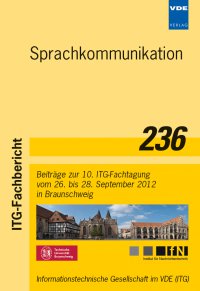Improving Beamforming for Distant Speech Recognition in Reverberant Environments Using a Genetic Algorithm for Planar Array Synthesis
Conference: Sprachkommunikation - Beiträge zur 10. ITG-Fachtagung
09/26/2012 - 09/28/2012 at Braunschweig, Deutschland
Proceedings: Sprachkommunikation
Pages: 4Language: englishTyp: PDF
Personal VDE Members are entitled to a 10% discount on this title
Authors:
Pessentheiner, Hannes; Kubin, Gernot (Signal Processing and Speech Communication Laboratory, Graz University of Technology, Graz, Austria)
Romsdorfer, Harald (Synvo GmbH, Leoben, Austria)
Abstract:
Beamforming is crucial for hands-free mobile terminals and voiceenabled automated home environments based on distant-speech interaction to mitigate causes of system degradation, e.g., interfering noise sources or competing speakers. Among the abilities and complexity of a beamformer its performance also depends on the microphone array geometry. This paper highlights a major disadvantage in beamforming — a high sensitivity to reflections from the ceiling and the floor at frequencies above 2000 Hz — by using a horizontal uniform circular array with a center microphone in reverberant environments, e.g., a conference room, and a steering direction close to the array plane. Furthermore, it presents an improved beamformer and a planar array synthesized by a modified genetic algorithm, which exhibits a reduced sensitivity to floor and ceiling reflections and an improved directivity at lower frequencies in combination with a beamformer. Index Terms: array signal processing, beamforming, planar array, genetic algorithm, non-dominated sorting, multiple objective optimization, crowded tournament selection, convex-optimization based beamformer


